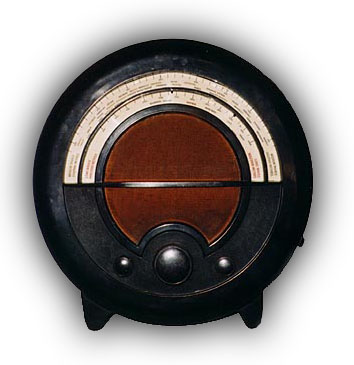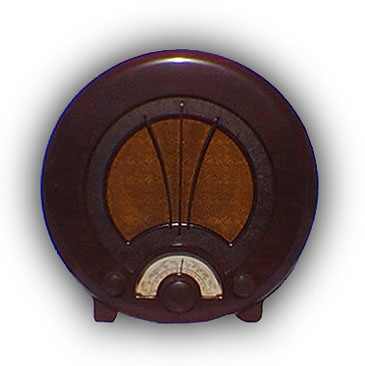

 |
EKCO AD75, 1935 Brown. The british 1935 four -valve mains AD76 radio was a variation on the famous AD 65 round Ekco radio and come in brown or green bakelite or the slightly more expensive black-and-chrome version. BC/LW price from 1500+ |
|
It was this growing element of symbolism which influenced the more innovative designers of the Thirties, as well as their interest in, and mastery of, new materials. They enabled some of the more enterprising manufacturers to begin to present their merchandise in a new way, and to alter the attitudes of the potential buyer to it. Certainly symbolism appears to have been an important motivation for the major designers who led the way to all-plastic cabinets in the Thirties. Some of these designers were already held in high repute among the avant-garde of the furniture design industry, and others had similar distinctions in the field of architecture. They came to wireless design with new ideas. Two such important British innovators of the period were Serge Chermayeff and Wells Coates whose cabinet designs for the Ekco company the first to produce all-mains receivers on a large scale in Britain were the prototypes for most of the trail-blazing designs that followed. The Ekco firm (E. K. Cole) were one of the first manufacturers to go over to bakelite, but their first cabinets using the material were of rather old-fashioned shapes that could just as well have been made in wood. They were therefore seen by the public as inferior and consequently gained little popularity. Initially, the company imported cabinets from Germany but they soon set up their own plant and ran a competition for the design of a new set. It was won by Coates and resulted in the production of the remarkable AD65 receiver which was far ahead of its time. The first completely circular radio, it would have been practically impossible to make in wood, and the design fully exploited the special properties of plastics to produce strikingly original shapes. The cabinet, molded in jet-black bakelite with chromium knobs and trim, resembled no known piece of furniture in form. Instead of emulating a piece of hand-made craftsmanship, it looked like a factory product; a piece of precision engineering with a mechanical purpose implied by its appearance. In this receiver the loudspeaker opening was completely unadorned, instead of being disguised or decorated; the indicator-dial was made to occupy almost half the total frontal area and bore the names of broadcasting stations worldwide; and the large tuning-controls were boldly presented as obvious operating-knobs. Looking like one huge tuning-dial, this pioneering radio seemed to symbolize world- wide electronic communication. Its stark, mechanical, functional and futurist look was in tune with a period marked by enthusiasm for the anticipated benefits of a Machine Age. For the first time since its original entry into the home as an undisguised scientific toy, the radio was now being presented for what it really was: a machine for entertainment and enlightenment. |
| | Home | Back | Catalins | Wood radios | Rollerblades | Site Map | Links | Mail | |